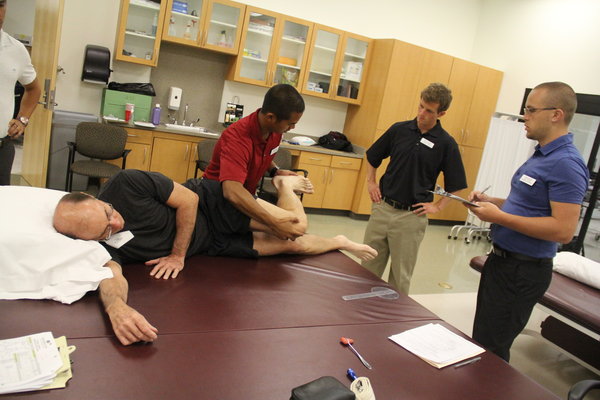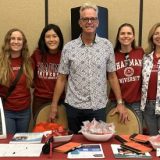
Healing Veterans as a Physical Therapist
August 7, 2014
This article, written by Paul Rogers, originally appeared on the Los Angeles Times website.
With more wounded warriors returning from abroad, the need to rehabilitate vets is greater than ever.
A career in the booming field of physical therapy can be rewarding in a number of ways, especially for those who want to give something back to their country by serving veterans returning from overseas.
The physical therapy profession in the U.S., in fact, has its roots in rehabilitating soldiers returning from World War I. The first school of physical therapy was established at Walter Reed Army Hospital in Washington, D.C., following the outbreak of that conflict.
With many recent veterans from Iraq and Afghanistan facing unique injuries that require complex rehabilitation, employment opportunities for physical therapists — especially within the
Department of Veterans Affairs
healthcare system — exist across the continuum of care, from acute hospital and inpatient rehab to home health and outpatient. One of the country’s largest employers of physical therapists, the VA has on staff more than 1,500, along with 370 physical therapy assistants.
Overall, demand for physical therapists is expected to increase both within the VA and the private sector, due in part to an aging population. The
U.S. Bureau of Labor Statistics
released projected physical therapist employment growth of 36% — equivalent to an additional 73,500 jobs — by 2022.
Helping to fill the growing demand, educational institutions such as
Chapman University
report that numbers of applicants for physical therapy programs have increased consistently over recent years. Chapman’s graduate programs are seeing especially robust growth.
“Chapman University’s Doctor of Physical Therapy program is experiencing its highest volume of applications, with 1,592 received,” said Serena Healey, physical therapy admissions and special events coordinator for Chapman’s Department of Physical Therapy. That’s up from a total of 1,310 applicants in 2012-13 and just over 1,200 in 2011-12, she said.
To accommodate the growing numbers, the university’s Doctor of Physical Therapy program is for the first time offering students the choice to apply for a fall or spring cohort. With the applicant pool at a historic high, students must make themselves competitive in their academic performance if they hope to get in.
“Applicants are encouraged to have a strong prerequisite GPA and GRE scores,” Healey said. Last year, the school’s entering class had an average 3.7 prerequisite GPA and 156 verbal, 156 quantitative and 4.0 writing for the GRE.
Continually accredited since 1928, Chapman’s Department of Physical Therapy offers both the Doctor of Physical Therapy degree and the transitional Doctor of Physical Therapy (tDPT) degree for physical therapists seeking to further their education to doctoral level. And since the first Chapman DPT graduates in 2004 took the licensure exam, they have enjoyed a 100% overall pass rate and a 100% employment rate.
Rooted in the past, the program is looking to the future with new facilities and an all-new campus.
“Chapman University’s Doctor of Physical Therapy program, one of the oldest continuously accredited physical therapy programs in the United States, will continue its tradition of educating high-quality therapists at the new
Rinker Health Science Campus
in Irvine beginning fall 2014,” said
Janeen Hill
.
The program’s new home will feature state-of-the-art motion analysis and anatomy laboratories, technologically advanced classrooms and educational experiences alongside students in Chapman’s new School of Pharmacy.

